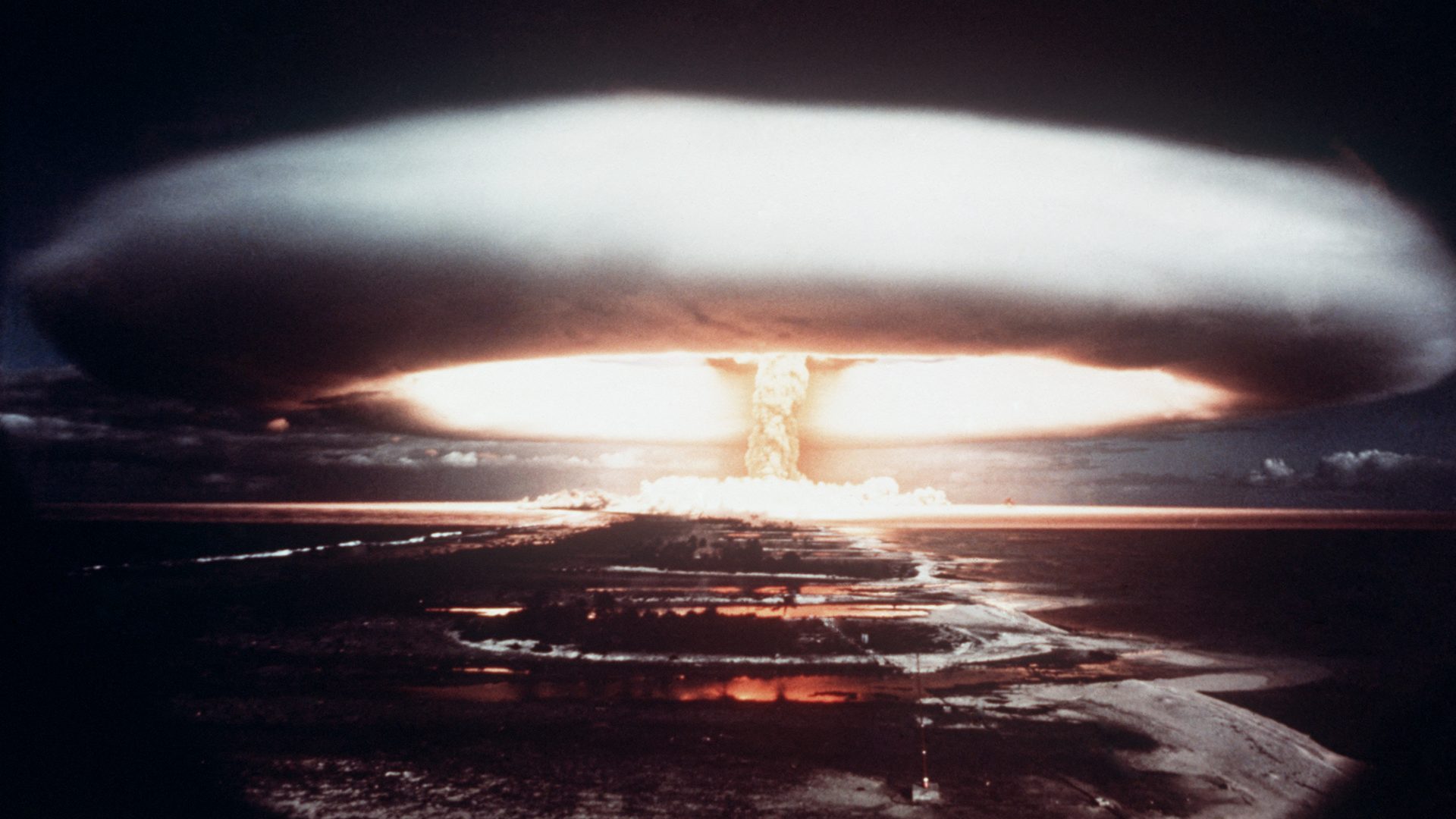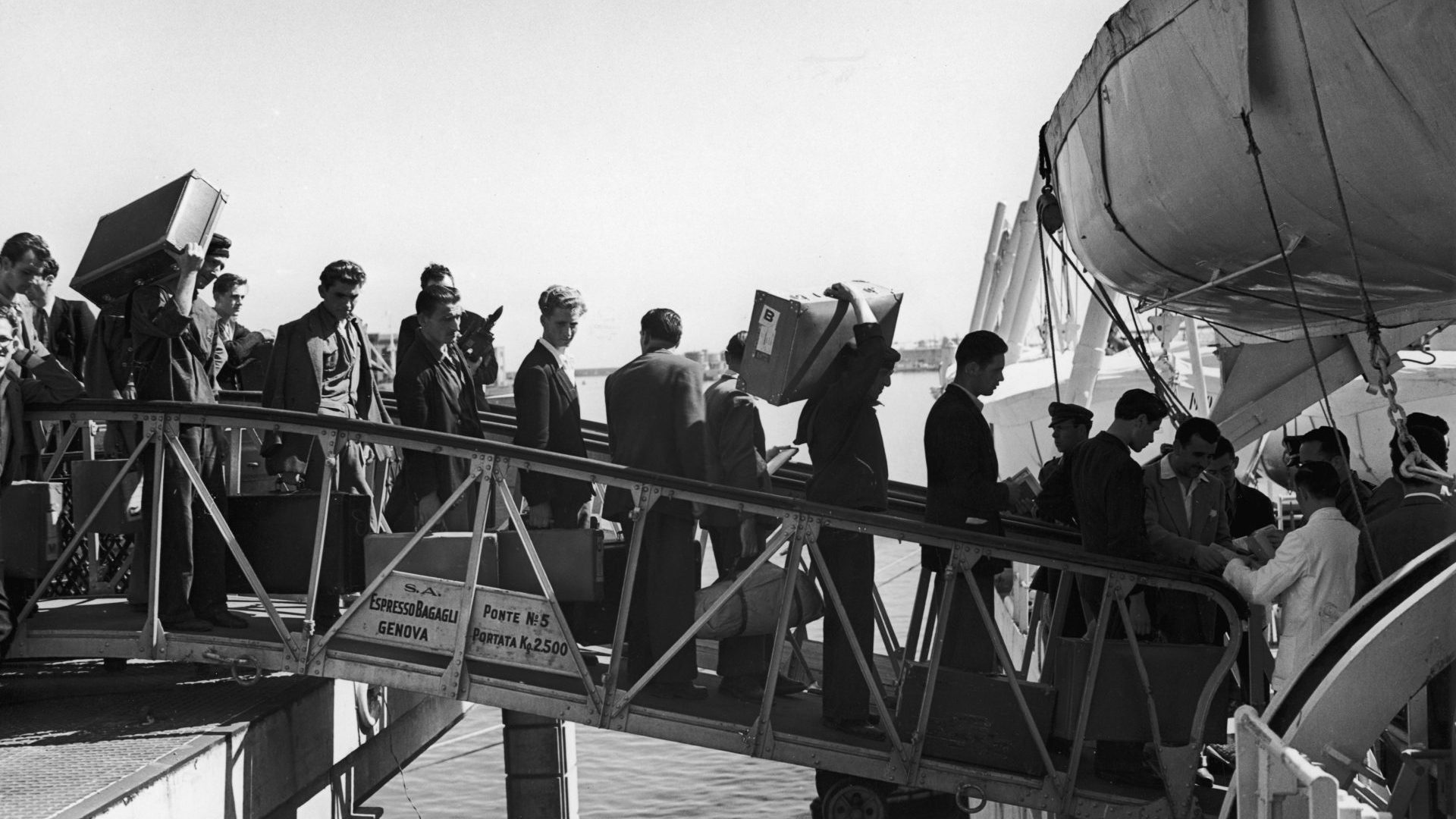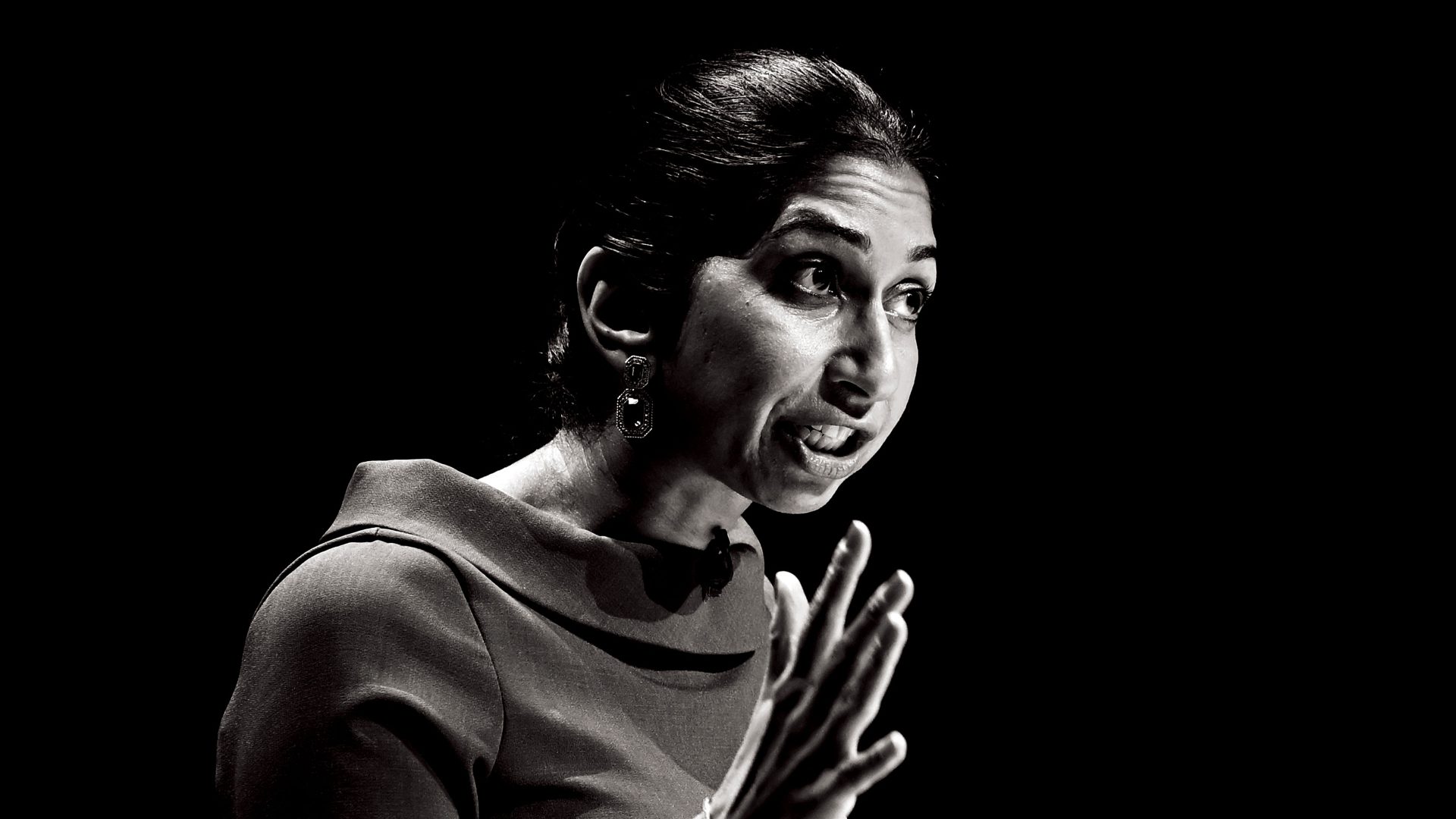Next month the Algerian president, Abdelmadjid Tebboune, is set to visit Emmanuel Macron in Paris. The two countries have a difficult past, with war giving way to hostility, giving way to a very curious form of interdependence.
The agenda for the visit looks crowded, with irregular migration through Algeria dominating the list of the Elysee’s priorities. However, unlike previous meetings between the two leaders, Tebboune arrives in France on the crest of a diplomatic wave fuelled by Algeria’s hydrocarbon reserves at a time when European supplies are at a premium.
Moreover, he arrives with a long list of Algeria’s own grievances, not least the tonnes of radioactive waste France has buried in the Sahara and for which it still won’t provide details.
It’s a common misnomer to call Algeria a former French colony. For 132 years it was actually part of France, with massive numbers of French migrants joining the poor of Europe in migrating to someone else’s country and building new lives.
That ended in 1962 when, after a war whose brutality bordered upon the biblical, Algerian insurgents wrested control of their country from the French and, by doing so, laid the ground for the myth that sovereignty was achieved in one single dramatic sweep.
It wasn’t. Under the accords governing the French withdrawal, Paris would retain control over the desert region around the town of Reggane, where it could continue the nuclear testing programme begun two years before.
In all, 17 nuclear tests were carried out around Reggane from 1960, during the height of the war, to 1966, when the bulk of testing shifted to French Polynesia.
I interviewed one man from that area, a retired French teacher named Abderkrim Touhami, a few times about the tests. We typically spoke over Skype, me from Tunis, he from his home in Tamanrasset, a desert village around 180km from the test site.
Despite the unusual circumstances, he appeared relaxed, the deep blue of his Tuareg robes contrasting with the sand and the white of his keffiyeh, as he took in the last of the dwindling sun’s rays from outside his home.
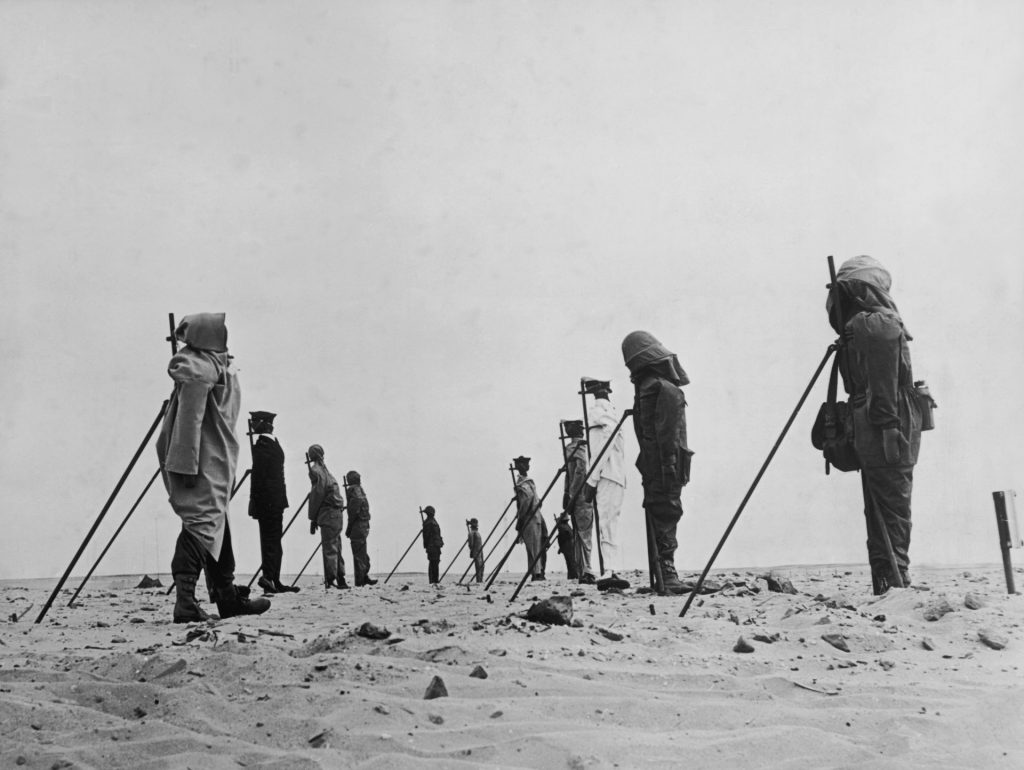
“The French had told people not to panic if they felt the earth shaking,” he said, describing the 70-kiloton explosion – three times the size of the one that destroyed Nagasaki – that took place in February 1960. “This was the most terrible test.”
Despite recalling a painful past and a difficult present, he was always quick to laugh or see the humour in any situation.
Moving the later tests underground did little to increase safety, as was demonstrated during the “Béryl Incident” of 1962, when the containment for one underground blast failed, resulting in a radioactive shower of dust and rock that fell on spectators, including the French defence minister, who fled the area directly after decontamination.
Subsequent investigations by journalists have revealed eyewitness testimonies of a radioactive cloud that emerged from the test site only to be carried 60km to the village of Mertoutek, described at the time as “inhabited by a few Tuareg families living in semi-nomadism.” Seventeen villagers died in the month after the test. Today, many remain sick.
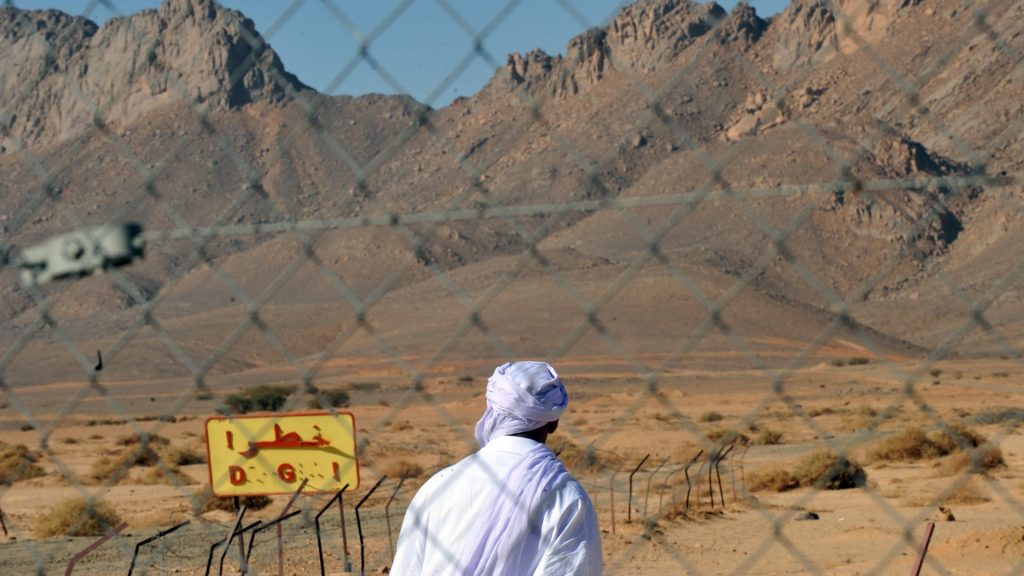
The Algerian soldiers who evacuated Abderkrim and his family all those years ago had assured them there was no chance of contamination. Nevertheless, as a retired French teacher used to chatting with other villagers in Tamanrasset, accounts of sickness due to the region’s radioactive legacy are commonplace and growing.
According to figures from the French Ministry of Defence, about 27,000 people were affected by the tests, including French technicians and military staff. According to a report by the University of Oran in Algeria, that number is far higher, probably closer to 60,000.
However, with tonnes of radioactive waste buried in the sand for decades, encompassing everything from tanks to gliders, increasing numbers of villagers are developing cancers, or experiencing birth defects on an epic scale.
Footage broadcast by France 24 a year ago paints a harrowing portrait of contemporary life in the area. Local men recount their birth defects and a child with an abnormally swollen leg tells of the pain he lives with every day. Footage shot by Algerian national television previously shows children dealing with incredible mental and physical birth defects.
From the nearby hospital, Dr Nadia Khayatti recounts the abnormally high instances of cancers she encounters regularly, all a consequence of the French testing and the waste that lies under the sand, she says.
“To be honest, we don’t know how much is down there, or what or where,” says Jean-Marie Collin, director of the International Campaign to Abolish Nuclear Weapons, France (ICAN).
While waste thought to be especially contaminated was encased in concrete, there is no public record of what items or how much was treated this way, or how much remains buried loose in the sand.
“We know they cut up heavy machinery, which they had used for testing, before burying it. There are also thought to be tiny particles of plutonium, around 25 grams, under the desert,” he says, “Everything was buried.”
The cost of making the sites safe for humans, animals and crops is unknown. “Again, it depends what’s down there,” Collin continued. “If you don’t do it correctly, you risk spreading the contamination. There is also the issue of housing. Many villages are now close to the test sites, meaning that whole neighbourhoods will need to be moved.”
To be clear, this isn’t to say that France hasn’t accepted a degree of responsibility. The 2010 Morin law offers compensation to anyone affected by the tests. They just need to provide the paperwork, in French, to prove where they were and how they have been affected. Often a far reach for the semi-nomadic and Arabic-speaking citizens of Algeria’s south.
Initial responsibility for that must lie with the French, who were at pains to reassure both their own soldiers and technicians, as well as villagers, that the tests were safe. However, taking responsibility for the nuclear tests carried out in Algeria’s south takes Paris a step closer to reckoning with the crimes of its colonial past amid renewed calls from Algeria for an apology.
Defeat in Algeria cut to the very heart of France’s sense of self. Towards the end of the conflict, almost a million French colonists, or pieds noirs, many who had been born in Algeria, fled the country for France. Keen to preserve their claim on Algerian soil, many had been among the most enthusiastic supporters of the war, either engaging in terror attacks of their own or wilfully urging on the savage extremes of the French military, not least the paratroop regiment of Lieutenant Jean-Marie Le Pen, who would return to France to found the far-right Front National.
That narrative of Paris’s betrayal, fostered by the returning pieds noirs and the Front National, created a lasting scar, which, despite the withdrawal having been ordered by the French national hero Charles de Gaulle, has only begun to heal in recent years.
All the same, the antipathy of the French right wing notwithstanding, how long Paris can afford to maintain anything less than warm relations with its former colony remains uncertain.
Algeria currently acts as a transit country for migrants from across sub-Saharan Africa who, often for reasons as straightforward as language, hope for new lives in Europe and, by extension, France. Last year alone, over 36,000 undocumented migrants were expelled from Algeria to French-speaking Niger. For rights experts, that was a catastrophe. For European policymakers, that’s 36,000 people they no longer need to trouble themselves with.
Another issue is the wealth of hydrocarbon reserves being pumped out from Algerian soil on a daily basis, destined for Europe and in short supply since Russia’s invasion of Ukraine gave fresh impetus to Macron’s diplomatic outreach.
Characterising the occupation as a “crime against humanity” before his eventual election, Macron has yet to offer Algeria an apology as president. Nevertheless, he appears to have gone further than any of his predecessors.
In 2020, Macron commissioned a report from the eminent historian Benjamin Stora, himself a member of the pieds noirs, which called for reconciliation rather than repentance or apologies.
More recently, French rhetoric has overlooked the crimes of colonisation, instead focusing on the shared pain of the war. During his own state visit to Algeria last year, Macron spoke of “a complex, painful common past” that “has at times prevented us from looking to the future”.
Prof Jonathan Hill of King’s College London, and a specialist in Algeria, says: “It looks like Macron’s gradually building up to issuing an apology. That might not be anytime soon, but acknowledging the French nuclear waste in Algeria would be a good first step.
“It isn’t just gas and oil,” he says, “though that’s critical. It’s also the potential for solar power, which is valuable.
“It’s also unlikely that Macron isn’t aware of Chinese and Russian manoeuvring in the area, with Russia particularly keen on forming an energy bloc distinct from Europe.”
How far Macron will go during Tebboune’s state visit in May remains to be seen. With the president’s popularity already dented by the violent protests against his pension reforms, he will probably be hoping for a diplomatic victory to correct France’s course and give his premiership fresh impetus.
I wish them both well. My thoughts keep returning to Abdelkrim. I tried contacting him several times ahead of this piece without success. He is not a young man and lives in an area of high radioactivity. I hope he is OK.

